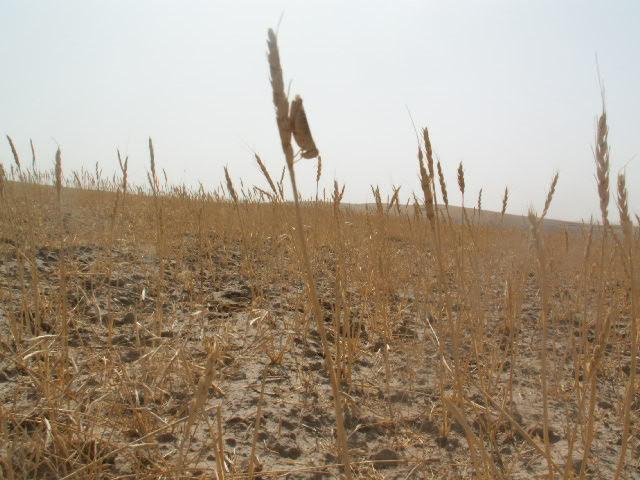“I planted wheat on my land but it has failed due to lack of rain,” Hamidullah, the owner of eight hectares in Chaparhar District in the eastern province of Nangarhar, told IRIN.
Enayatullah, a farmer in Nangarhar’s Sor Rod District, said: “I spent 70,000 Afghanis [US$1,450] on wheat and onion seeds but my fields have dried out.”
Provincial agriculture officials said “drought” has been reported in 12 of the province’s 23 districts, mostly in areas where farmers are reliant on rain, rather than irrigation.
About 20,000 hectares of farmland is drought-affected, said Muhsil Khan, an agriculture official, adding that Sor Rod, Chaparhar, Rodat, Achin, Spinghar and Goshta were the worst hit.
Drought-affected farmers in Nangarhar said they needed food aid, and assistance to irrigate their land.
However, the drought-like conditions are not limited to Nangarhar.
“Despite periods of rain and snow during March and early April, precipitation deficits remain substantial across the northeast parts of the country,” Famine Early Warning Systems Network (FEWS NET), an affiliate of the US Agency for International Development, said in a 14 April report.
FEWS NET predicted a “mid-level drought” in northeastern areas.
The Ministry of Agriculture, Irrigation and Livestock (MAIL) said it had sent assessment teams to the region and would present its analysis in May.
No severe implications
|
Photo: FEWS-Net  |
| Afghanistan’s mid-term food security map |
“A lot of the rain-fed fields are in the south and west of the country while in the east vegetables are the main agricultural products,” Majid Qarar, MAIL’s spokesman, told IRIN, adding that a possible drought in the northeast would not have severe food security implications for the country.
Wheat is the main staple for most Afghans. MAIL officials anticipate a good harvest this year - mainly in the south, west and north.
But despite this, and a record harvest last year, over seven million people were food insecure and helped by the UN World Food Programme.
An April-June medium-term food security outlook map by FEWS NET shows that - apart from the southern province of Helmand - all the other 33 provinces will be moderately or highly food insecure.
ad/cb
This article was produced by IRIN News while it was part of the United Nations Office for the Coordination of Humanitarian Affairs. Please send queries on copyright or liability to the UN. For more information: https://shop.un.org/rights-permissions





